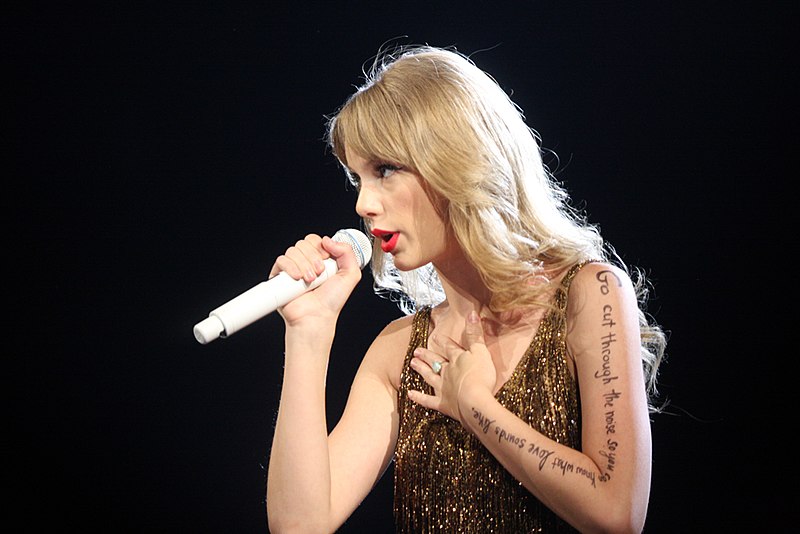Dear Reader…
Lately, my inbox is strewn (between the cute animal videos and instagrammable recipe content) with links sent by friends and colleagues to articles with titles such as ‘20 Taylor Swift songs with literary references you may have missed’ and ‘Taylor Swift’s songs are full of literary references – so what do they tell us?’ Since the 2020 release of Swift’s interlinked albums Folkore and Evermore, which she herself declared the product of being unable to stop telling stories as her imagination ran wild during lockdown, increasing interest has been paid to Swift as a self-consciously literary artist, whose works brim with references to everything from Alice in Wonderland to The Great Gatsby. Leading Shakespeare professor Jonathan Bate recently advocated for Taylor Swift as a ‘literary giant’ in The Sydney Morning Herald, the subtitle of his article declaring that he would ‘compare her (favourably) to the greats of poetry and prose’. Having long sent her eagle-eyed fans hunting for the famous ‘easter eggs’ with which she mischievously peppers her lyrics and videos, Swift’s work now seems to invite us on a quest to identify and collect her numerous literary allusions. Everyone from the Swiftie community on Reddit to English literature professors have risen eagerly to the challenge.
Those professors include myself, a simple overexcitable Swiftie somehow masquerading as Prof. Dr. McCausland at Ghent University, waiting for the day they realise I’m not a ‘serious’ scholar and kick me out. Yet, the more I contemplate the interconnections between Swift’s songwriting and works of English literature (and by English, I mean Anglophone) – a train of thought given particular momentum as I listened to ‘The Great War’ last autumn on her latest album, Midnights – the more I am convinced that there is more here than will fit into a simple snappy news article, blog post or journal article. More, even, than I could cram into a conference paper, as several of my esteemed colleagues have done. This relationship is more complex than a simple checklist of allusions or references could do justice to, and encompasses more than just the texture or flavour of a particular song – which is saying something, since Swift as an artist possesses an extraordinarily broad generic range. Rather, the currents of English literature that irrigate Swift’s work speak to everything from her self-fashioning as an artist, her engagement with contemporary media zeitgeists, her feminism, her branding, and the ‘startling intimacy’ (to use the New Yorker’s phrase) she cultivates in her relationship with her colossal fanbase.
I would also suggest that it is this relationship with English literature that gives Swift’s work its extraordinary appeal, captivating everyone from tween girls to their fathers, NASA astronauts to the president of Chile. While there is no doubting that her songwriting is novel, it blends genres, subverts traditions, engages in metanarrative, is playfully self-aware, and critiques the fraught landscape of its own production in ways that are, and have historically been, highly literary – and often highly marketable. Writers have been engaging in such strategies for as long as there has been writing, and even before that, when literature was primarily an oral medium. Part of the pleasure of literature, as scholars of intertextuality and reception theory might argue, is its necessary situation in relation to a web of other texts – a relation that might be one of reverence, critique, subversion or revision; or even all of those simultaneously. Swift’s songs gain an additional dimension from their positioning within this milieu. Sure, we can enjoy the way in which August, Betty and Cardigan (from the album Folklore) are all the same story told from different perspectives, but this becomes doubly resonant when we locate it within a long tradition of literature ‘writing back’ to other literatures, and the way in which this raises questions of narrative authority, the subjectivity of truth, and the ownership of stories; questions highly pertinent to Swift’s own career.
Pinpointing the literary aspect of Swift’s work is more complex than simply locating allusions to canonical literary works found in her songs. It is to be found not only in her lyrics, but in the entire authorial persona she has carefully crafted, and the ways in which this persona shifts and fluctuates in line with the currents of Swift’s own personal life, but also the lives of her fans, the relentless cycle of global events (from the MeToo movement to the Covid-19 pandemic) and the ongoing reception of her music by everyone from critics to superfans. To use (some of) her own words, her writing is like a mirrorball: a perpetually shifting entity that reflects every version of ourselves back at us, mediated via a rich framework of literary tropes and techniques. It is the aim of this blog, Swifterature – and my course ‘Literature (Taylor’s Version)’ at Ghent University – to begin to unpack some of these. Stay tuned.


Quote by Voltaire: “Anything that is too stupid to be spoken is sung.”
Quote by Taylor Swift: ‘You say it in the street, that’s a knockout/But you say it in a tweet (/anonymous blog comment), that’s a cop out’